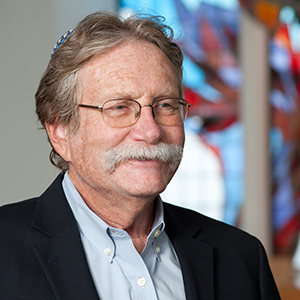Crying With God

In an essay some years ago, the Israeli teacher and poet Sara Friedland ben Arza asked us to focus on the prayer Hayom Harat Olam (Today the World Stands as at Birth) in the Rosh Hashanah liturgy. She asks why, in a religious tradition that moved away so notably from ancient mythological motifs, is there a rare reference to the “birthing” of the world? And why is that short prayer placed just after the shofar
is blown? In fact, she makes another very perceptive observation. The imagery of the conception and birthing of children, so unusual in a liturgy that is mostly about God’s sovereignty and judgment, is actually at the very heart of every one of the scriptural readings for this holiday: Sarah and Isaac, Abraham and Ishmael, Hannah and Samuel, and Rachel and her exiled children. What, in the end, is this focus on the wish for, and fears for, children all about? Ben Arza’s answer is that by analogizing our relationship to God to the relationship of parents and children and using these vivid narratives to evoke spiritual and ethical depth on these days, the tradition is trying to direct our thoughts to God through things
that we already know in the human realm.
The decision to birth children is an anticipation of joy accompanied by risk—we hope that our children will walk a road of goodness and righteousness and that we will be able to provide for them and protect them from the dangers of the world. What joy there is when all these hopes are fulfilled, and what inconsolable grief there is when they are not, when children go astray, or when we are unable to keep them safe. And so it is with God, whose decision to birth a world was from the beginning an act of love and delight in creation, but also—this poem teaches us—fraught with the very same perils that we face in our lives and families.
When those terrible fears for children (ours and God’s) become real, we weep. The Talmud tells us that God repairs to a secret place in order to cry for the corruption of the world by God’s children. And parents whose children hurt others or are hurt by others, who are unable to keep their children from harm, or even death, cry a shattering cry. Those sobbing sounds are the broken and breath-snatching sounds of the shofar’s shevarim and teruah.
This year, we heard these wailings from the loved ones of the victims of October 7, from the families of Israeli hostages and of fallen IDF soldiers, and from the tormented parents in Gaza, children who are described in our Tanakh with the words, “Little children beg for bread, but none can give them a morsel” (Lam. 4:4). Can one imagine the anguish the heavenly Parent must feel seeing the tiny caskets being interred on both sides of a border that divides territory but not human nature?
That is perhaps why, immediately after those sobbing and wailing sounds of the Shofar, Hayom Harat Olam deliberately gives us the bold image of God’s womb that conceived us. Perhaps by turning our thoughts to the pain felt by the Creator, we might be able to arouse compassion in our human family so as to end the nightmares we fear for those whom we have conceived in love.
This piece was published in Glimmers of Light: Reflections on Hope for the Days of Awe 5785
The publication and distribution of the JTS Commentary are made possible by a generous grant from Rita Dee (z”l) and Harold Hassenfeld (z”l).



